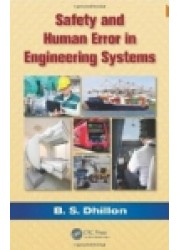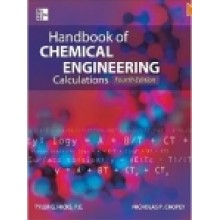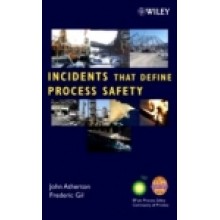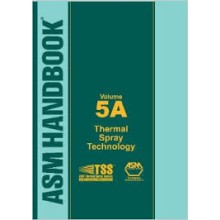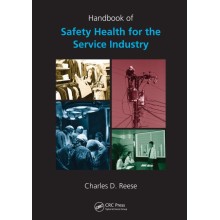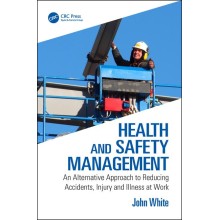Safety and Human Error in Engineering Systems
Quantity:
-
Add to Compare
In an approach that combines coverage of safety and human error into a single volume, Safety and Human Error in Engineering Systems eliminates the need to consult many different and diverse sources for those who need information about both topics. The book begins with an introduction to aspects of safety and human error and a discussion of mathematical concepts that builds understanding of the material presented in subsequent chapters.
The author describes the methods that can be used to perform safety and human error analysis in engineering systems and includes examples, along with their solutions, as well as problems to test reader comprehension. He presents a total of ten methods considered useful for performing safety and human error analysis in engineering systems. The book also covers safety and human error transportation systems, medical systems, and mining equipment as well as robots and software.
Nowadays, engineering systems are an important element of the world economy as each year billions of dollars are spent to develop, manufacture, and operate various types of engineering systems around the globe. A rise in accidental deaths has put the spotlight on the role human error plays in the safety and failure of these systems. Written by an expert in various aspects of healthcare, engineering management, design, reliability, safety, and quality, this book provides tools and techniques for improving engineering systems with respect to human error and safety.
Features
- Covers important aspects of safety of commonly used transportation systems
- Discusses human error in medical systems safety, mining equipment safety, and rail, road, aviation,
and sea transportation systems - Examines human error in power plant maintenance and aviation maintenance
Contents
Chapter 1: Introduction
1.1 Background
1.2 Facts and Figures
1.3 Terms and Definitions
1.4 Useful Sources for Obtaining Information on Safety and Human Error in Engineering Systems
1.5 Scope of the Book
Chapter 2: Basic Mathematical Concepts
2.1 Introduction
2.2 Range, Median, Arithmetic Mean, and Mean Deviation
2.3 Boolean Algebra Laws
2.4 Probability Definition and Properties
2.5 Basic Probability Distribution-Related Definitions
2.6 Probability Distributions
2.7 Laplace Transform Definition, Common Laplace Transforms, Final Value Theorem Laplace Transform, and Laplace Transforms’ Application in Solving First-Order
Differential Equations
Chapter 3: Safety and Human Factors and Error Basics
3.1 Introduction
3.2 Safety and Engineers and Product Hazard Classifications
3.3 Common Mechanical Injuries and Common Causes of Product Liability Exposure
3.4 Safety Management Principles and Product Safety Organization Tasks
3.5 Accident Causation Theories
3.6 Human Factors Objectives and Man–Machine Comparisons
3.7 Typical Human Behaviors and Human Sensory Capacities
3.8 Useful Human Factors Guidelines and Mathematical Human Factors-Related Formulas
3.9 Human Error Occurrence Examples and Studies, and Reasons
3.10 Human Error Types
3.11 General Stress Factors and Occupational Stressors
Chapter 4: Methods for Performing Safety and Human Error Analysis in Engineering Systems
4.1 Introduction
4.2 Interface Safety Analysis (ISA)
4.3 Technics of Operations Review
4.4 Root Cause Analysis
4.5 Hazards and Operability Analysis
4.6 Preliminary Hazard Analysis
4.7 Failure Modes and Effect Analysis (FMEA)
4.8 Probability Tree Method
4.9 Error-Cause Removal Program
4.10 Markov Method
4.11 Fault Tree Analysis
Chapter 5: Transportation Systems Safety
5.1 Introduction
5.2 Examples of Rail Accidents and Their Causes
5.3 Classifications of Rail Accidents by Causes and Effects
5.4 Railroad Tank Car Safety
5.5 Light-Rail Transit System Safety Issues
5.6 Truck Safety-Related Facts and Figures
5.7 Truck and Bus Safety-Related Issues
5.8 Commonly Cited Truck Safety-Related Problems and Recommendations for Improving Truck Safety
5.9 Transit Bus Safety and Important Design-Related Safety Feature Areas
5.10 World Airline Accident Analysis and United States Airline-Related Fatalities
5.11 Causes of Airplane Crashes
5.12 Air Safety-Related Regulatory Bodies and Their Responsibilities
5.13 Marine Accidents
5.14 Ship Port-Related Hazards
5.15 Ship Safety Assessment and Global Maritime Distress Safety System
Chapter 6: Medical Systems Safety
6.1 Introduction
6.2 Facts and Figures
6.3 Medical Device Safety versus Reliability and Medical Device Hardware and Software Safety
6.4 Types of Medical Device Safety and Essential Safety-Related Requirements for Medical Devices
6.5 Safety in Medical Device Life Cycle
6.6 Software Issues in Cardiac Rhythm Management Products Safety
6.7 Classifications of Medical Device Accident Causes and Legal Aspects of Medical Device Safety
6.8 Methods for Performing Medical System Safety Analysis and Considerations for Their Selection
Chapter 7: Mining Equipment Safety
7.1 Introduction
7.2 Facts and Figures
7.3 Types of Mining Equipment Involved in Fatal Accidents and the Fatal Accidents’ Breakdowns and Main Causes of Mining Equipment Accide
7.4 Mining Ascending Elevator Accidents, and Fatalities and Injuries Due to Drill Rig, Haul Truck, and Crane Contact with High Tension Power Lines
7.5 Programmable Electronic-Related Mining Mishaps and Lessons Learned
7.6 Equipment Fire-Related Mining Accidents and Mining Equipment Fire Ignition Sources
7.7 Strategies to Reduce Mining Equipment Fires and Useful Guidelines to Improve Electrical Safety in Mines
7.8 Human Factors-Related Design Tips for Safer Mining Equipment
7.9 Hazardous Area Signaling and Ranging Device (HASARD) Proximity Warning System
7.10 Useful Methods to Perform Mining Equipment Safety Analysis
Chapter 8: Robot and Software Safety
8.1 Introduction
8.2 Robot Safety-Related Facts, Figures, and Examples
8.3 Robot Accident Classifications and Causes of Robot Hazards
8.4 Safety Considerations in Robot Life Cycle
8.5 Human Factors Issues in Robotic Safety
8.6 Robot Safeguard Methods and a Methodology for Safer Robot Design
8.7 General Guidelines to Reduce Robot Safety Problems
8.8 Software Safety-Related Facts, Figures, and Examples
8.9 Ways That Software Can Contribute to Hazards
8.10 Basic Software System Safety-Related Tasks
8.11 Software Safety Assurance Program and Useful Software Safety Design-Related Guidelines
8.12 Software Hazard Analysis Methods
Chapter 9: Human Error in Transportation Systems
9.1 Introduction
9.2 Railway System Human Error-Related Facts and Figures
9.3 Railway Personnel Tasks Prone to Serious Human Error
9.4 Typical Human Error Occurrence Areas in Railway Operation
9.5 A Useful Checklist of Statements to Reduce Human Error in Railways
9.6 Road Transportation Systems Human Error-Related Facts and Figures
9.7 Operational Influences on Commercial Driver Performance and Classifications of Driver Errors
9.8 Common Driver Errors and Ranking of Driver Errors
9.9 Aviation Systems Human Error-Related Facts and Figures
9.10 Contributory Factors to Flight Crew Decision Errors
9.11 Types of Pilot-Controller Communication-Related Errors and Useful Recommendations for Reducing Them
9.12 Organizational-Related Factors in Commercial Aviation Accidents in Regard to Pilot Error
9.13 Shipping Systems Human Error-Related Facts and Figures
9.14 Marine Industry Human Factors Issues
9.15 Approaches to Reduce the Manning Impact on Shipping System Reliability
Chapter 10: Human Error in Healthcare Systems and in Mining Equipment
10.1 Introduction
10.2 Healthcare Systems Human Error-Related Facts and Figures
10.3 Medical Device Operator Errors and Medical Devices with a High Incidence of Human Errors
10.4 Human Error Causing User-Interface Device Design-Related Problems and Useful Guidelines
for Medical Device Control/Display Arrangement and Design, Software Design, Installation, and Alarms with Respect to
User Errors
10.5 General Guidelines for Reducing Medical Device/Equipment User Interface-Related Errors
10.6 An Approach to Human Factors during the Medical Device Development Process to Reduce Human Errors
10.7 Causes and Classifications of Human Errors Resulting in Fatal Mine Accidents
10.8 Common Mining Equipment-Related Maintenance Errors and Their Contributory Factors
10.9 Useful Engineering Design Improvement Guidelines to Reduce Mining Equipment Maintenance Errors and General Factors Responsible for Failing to Reduce Human Errors in the Mining Sector at Large
10.10 Methods to Perform Mining Equipment Human Error Analysis
Chapter 11: Human Error in Power Plant Maintenance and Aviation Maintenance
11.1 Introduction
11.2 Power Plant Maintenance Human Error-Related Facts, Figures, and Examples
11.3 Classifications of Causes for the Occurrence of Human Errors in Power Plant Maintenance and Their Causal Factors
11.4 Maintenance-Related Tasks Most Susceptible to the Occurrence of Human Error in Power Generation
11.5 Methods for Performing Human Error Analysis in Power Plant Maintenance
11.6 Guidelines to Reduce and Prevent Human Errors in Power Generation Maintenance
11.7 Aviation Maintenance Human Error-Related Facts and Figures
11.8 Causes for the Occurrence of Human Error in Aviation Maintenance
11.9 Types of Human Errors in Aircraft Maintenance Activities and Their Occurrence Frequency and Common Human Errors in Aircraft Maintenance
11.10 Maintenance Error Decision Aid (MEDA)
11.11 Guidelines to Reducing Human Error in Aircraft Maintenance
Appendix
Index
Write a review
Your Name:Your Review: Note: HTML is not translated!
Rating: Bad Good
Enter the code in the box below:
Copyright © 2014 Engineering Standards Bureau. All Rights Reserved.
Developed By Zoom Into Web


